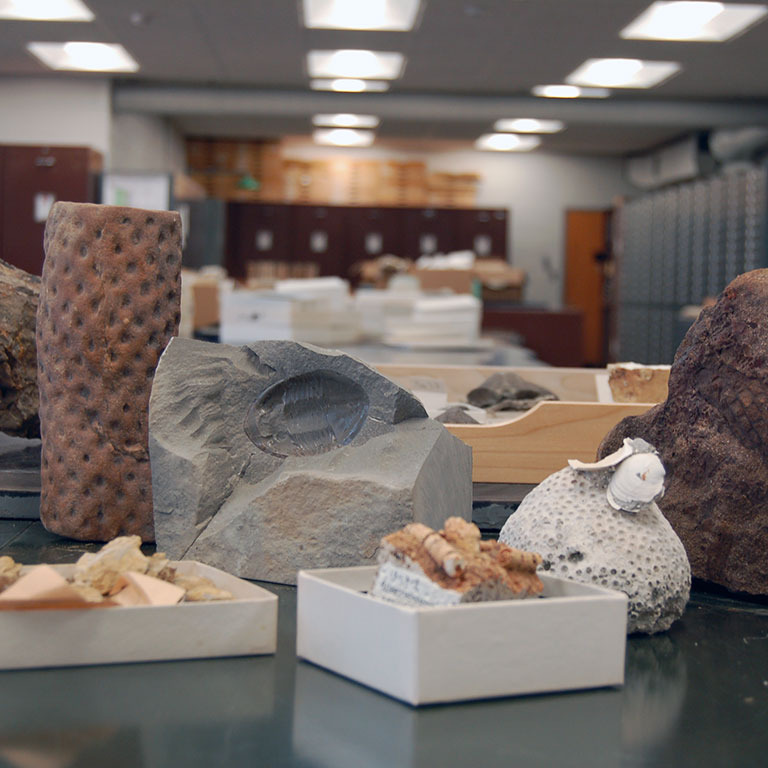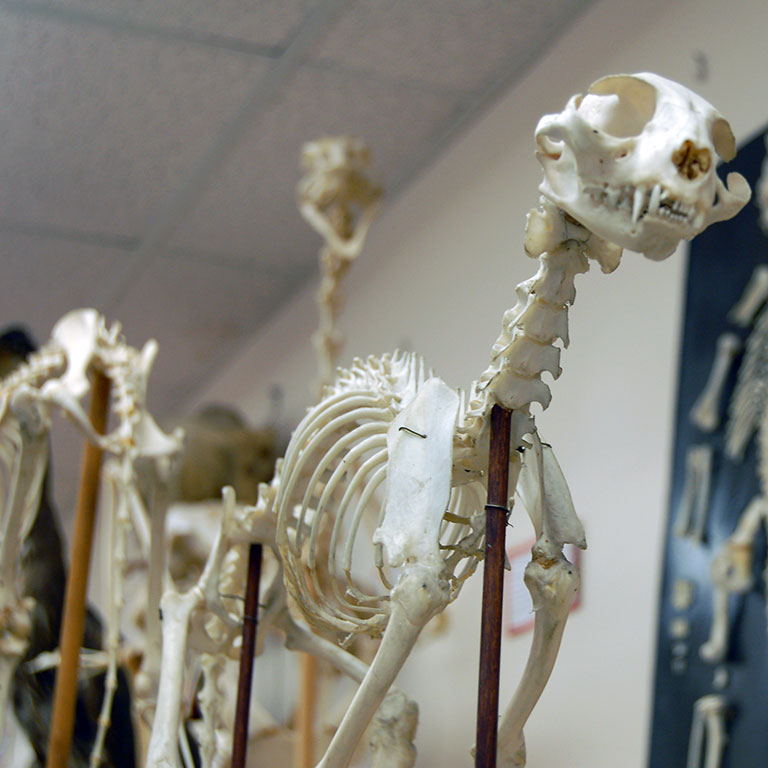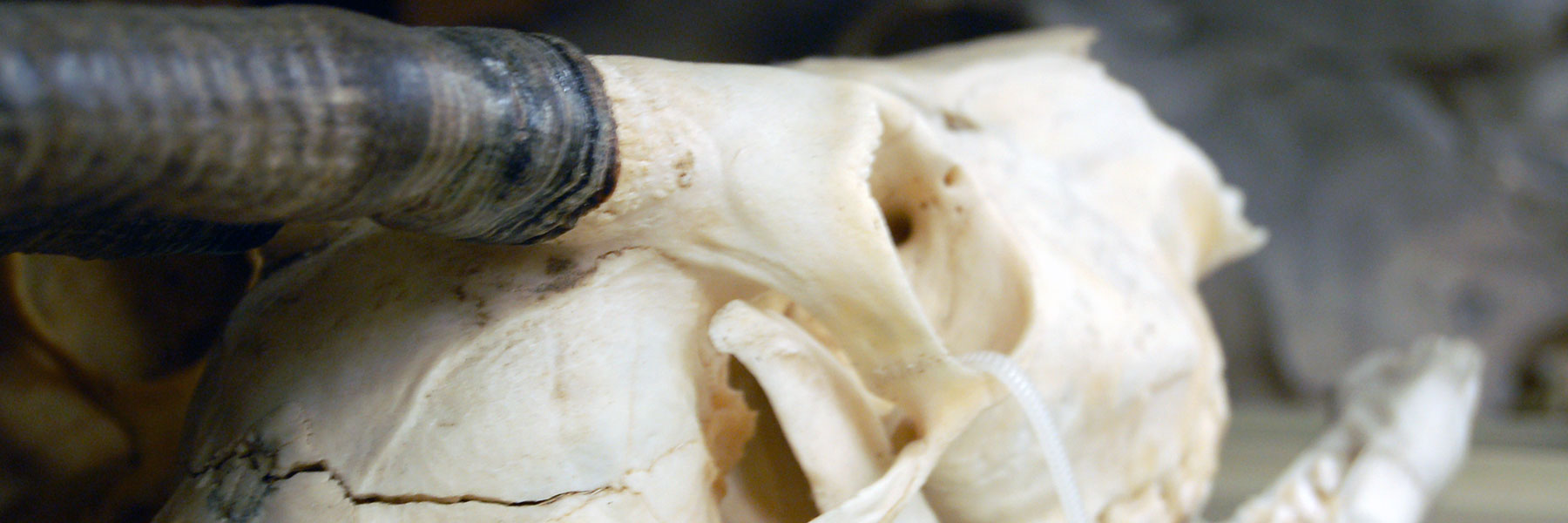CBRC is uniquely positioned to share digital infrastructure resources for an expanded audience within Indiana University. We continue to train graduate and undergraduate students in advanced digitization techniques and have opportunities for expansion into university classes across natural history disciplines. We have expertise and potential to integrate more firmly into the digitization community to learn and share new techniques and their applications to reveal Earth’s biological patterns and processes.
CBRC Members

IU PALEONTOLOGY COLLECTION
Earth and Atmospheric Sciences, Geological Sciences Building IUB
The IU Paleontology Collection is public trust research repository for fossil material. Its 1.3 million specimens document past research projects and serve as a resource for new synthetic research on stratigraphy, paleoecology, evolution, and the biotic effects of climate change. The Collection serves as a resource for paleontological research at Indiana University and the international scientific community. With permission from its curators, researchers may gain access to the Collection by visiting Indiana University or via loan.

WILLIAM R. ADAMS ZOOARCHAEOLOGY LAB
Department of Anthropology, Student Building IUB
The William R. Adams Zooarchaeology Laboratory (WRAZL) at Indiana University is a research laboratory affiliated with the Anthropology Department on the Bloomington campus. Located in the lower level of the Student Building, the zooarchaeology lab is a 1,400 square foot facility that includes over 10,000 modern comparative faunal remains and also houses archaeological research projects from the North American Plains.
The William R. Adams Zooarchaeology Laboratory (WRAZL) at Indiana University is a research laboratory affiliated with the Anthropology Department on the Bloomington campus. Located in the lower level of the Student Building, the zooarchaeology lab is a 1,400 square foot facility that includes over 10,000 modern comparative faunal remains and also houses archaeological research projects from the North American Plains.
At its core, WRAZL is a biological reference collection. Museum collections like these are built and maintained to aid researchers, teachers, and students in understanding the variety present in the the natural world. To do that, we process, manage, and care for the skeletons of a wide variety of species, with representatives of a broad range of ages, sexes, geographic origins, and other sources of individual variation, as well as pathological specimens. Fortunately, at this time we seldom find it necessary to collect specimens from the wild, as we are able to acquire a large number from cooperating departments, other universities, government entities, hunters and fishermen, zoos, and roadkill.
Currently, the collection contains approximately over 10,000 catalogue numbers, including 2,993 non-primate mammals, 3,634 birds, 1,936 fish, 1,390 reptiles, 229 amphibians, and an uncounted number of invertebrates. The Department of Anthropology’s primate skeletons are housed in the Human Origins and Primate Evolution Laboratory.


